Attractions · Europe · France · Going Out · Regions · Western Europe
5 alternative Paris museums to avoid the crowds at the Louvre and Musée d’Orsay
The Louvre and the D’Orsay Museum are the two most popular museums in Paris, drawing record numbers of visitors in recent years. If you don’t want to deal with the crowds or have already been to the Louvre and the D’Orsay and want an alternative, there are over 100 other museums in Paris to choose from.
 Here’s a list of five off-the-beaten-path museums we recommend.
Musée Carnavalet
16 Rue des Francs Bourgeois, Paris 75003
An historic mansion from 1548, once lived in by Madame Sevigne, the celebrated letter writer, was converted into the Carnavalet Museum in 1880, under the order of Eugene Haussmann. The Musée Carnavalet is actually a conglomeration of two former mansions and takes up almost an entire block in the center of the Marais district.
Here’s a list of five off-the-beaten-path museums we recommend.
Musée Carnavalet
16 Rue des Francs Bourgeois, Paris 75003
An historic mansion from 1548, once lived in by Madame Sevigne, the celebrated letter writer, was converted into the Carnavalet Museum in 1880, under the order of Eugene Haussmann. The Musée Carnavalet is actually a conglomeration of two former mansions and takes up almost an entire block in the center of the Marais district.
 Musée Carnavalet focuses on the history of the city of Paris and contains an immense and rich collection of thousands of paintings, sculptures, photos, engravings, drawings, pieces of furniture, and various other items. It covers the most significant periods in Parisian history including the earliest settlement by the Romans in 52AD, then called Lutetia, the medieval period, the Renaissance, the French Revolution, the sweeping reconstruction in the 1800s, and finally the 20th century. One gallery is dedicated to the antique shop signs from the 16th to the 20th century. In addition, the museum frequently presents temporary exhibitions. Three lush gardens including a formal garden and herb and vegetable garden are open to the public.
Musée Carnavalet focuses on the history of the city of Paris and contains an immense and rich collection of thousands of paintings, sculptures, photos, engravings, drawings, pieces of furniture, and various other items. It covers the most significant periods in Parisian history including the earliest settlement by the Romans in 52AD, then called Lutetia, the medieval period, the Renaissance, the French Revolution, the sweeping reconstruction in the 1800s, and finally the 20th century. One gallery is dedicated to the antique shop signs from the 16th to the 20th century. In addition, the museum frequently presents temporary exhibitions. Three lush gardens including a formal garden and herb and vegetable garden are open to the public.
 Admission is free for the permanent collection.
Musée Cognacq-Jay
8 Rue Elzevir, Paris 75003
Just around the corner from the Musée Carnavalet, is a small gem of a museum, Musée Cognacq-Jay. Ernest Cognacq, was the owner of a chain of luxury department stores, Samaritaine, and he and his wife, Mary-Louise Jay were avid collectors of fine antiques, amassing an extensive collection between 1900 and 1927. When Cognacq died in 1929, he bequeathed his collection to the city of Paris, so that it was available for public viewing and for historical purposes.
Admission is free for the permanent collection.
Musée Cognacq-Jay
8 Rue Elzevir, Paris 75003
Just around the corner from the Musée Carnavalet, is a small gem of a museum, Musée Cognacq-Jay. Ernest Cognacq, was the owner of a chain of luxury department stores, Samaritaine, and he and his wife, Mary-Louise Jay were avid collectors of fine antiques, amassing an extensive collection between 1900 and 1927. When Cognacq died in 1929, he bequeathed his collection to the city of Paris, so that it was available for public viewing and for historical purposes.
 The museum was originally located on a site next door to the Samaritaine store on Boulevard des Capucines, close to the Paris Opera Garnier. In 1990 the collection was moved to a former, large-scale townhouse constructed in 1575 for an aristocratic family. Today the museum has meticulously recreated many of the former rooms of the Cognacq-Jay family, filled with antiques, furniture, objets, lamps, chandeliers, carpets, tapestries, and artifacts, mostly from the 18th century.
The museum was originally located on a site next door to the Samaritaine store on Boulevard des Capucines, close to the Paris Opera Garnier. In 1990 the collection was moved to a former, large-scale townhouse constructed in 1575 for an aristocratic family. Today the museum has meticulously recreated many of the former rooms of the Cognacq-Jay family, filled with antiques, furniture, objets, lamps, chandeliers, carpets, tapestries, and artifacts, mostly from the 18th century.
 Admission is free for the permanent collection.
Fondation Louis Vuitton
Avenue du Mahatma Gandhi, Paris 75116
A modern-day behemoth made of glass and steel, is dedicated to one of the great art collections in the world. Billionaire Bernard Arnault, CEO of LVMH Moët Hennessy – Louis Vuitton the largest, luxury-goods company in the world, commissioned super-star, American architect Frank Gehry, to design Fondation Louis Vuitton, a museum to house his vast and varied, private art collection. Opened in 2014, Fondation Louis Vuitton, is located in the Bois de Boulogne park on the perimeter of the city of Paris. Gehry’s design concept was to create a massive building with a series of 12 panels with 3600 glass to simulate large boat sails and his inspiration came from the Grand Palais, another massive glass structure, which was built for the 1900 World’s Fair.
Admission is free for the permanent collection.
Fondation Louis Vuitton
Avenue du Mahatma Gandhi, Paris 75116
A modern-day behemoth made of glass and steel, is dedicated to one of the great art collections in the world. Billionaire Bernard Arnault, CEO of LVMH Moët Hennessy – Louis Vuitton the largest, luxury-goods company in the world, commissioned super-star, American architect Frank Gehry, to design Fondation Louis Vuitton, a museum to house his vast and varied, private art collection. Opened in 2014, Fondation Louis Vuitton, is located in the Bois de Boulogne park on the perimeter of the city of Paris. Gehry’s design concept was to create a massive building with a series of 12 panels with 3600 glass to simulate large boat sails and his inspiration came from the Grand Palais, another massive glass structure, which was built for the 1900 World’s Fair.
 The 13,000 square foot interior is divided into eleven galleries, which rotates Arnault’s collection of mostly 20th century, contemporary artists. The striking architecture of the building sometimes distracts the viewer from seeing the art but makes a statement of its own. Jean-Michel Basquiat, Ellsworth Kelly, Jeff Koons, Taryn Simon, Gilbert and George, and Sarah Morris are just a handful of the stellar artists whose work is in the collection. The museum has a gourmet restaurant serving lunch and dinner with an outdoor terrace, a gift boutique, and book shop.
Musée de la Vie Romantique
16 Rue Chaptal, Paris 75009
Literally meaning the romantic life museum, Musée de la Vie Romantique is a delightful treasure that whisks you back to a home filled with the company of artists and writers of the late 1800s. Musée de la Vie Romantique, located below Montmartre, was the home of Dutch born portrait painter Ary Scheffer. He and his daughter became noted for their Friday night salons held in their house, inviting artists, musicians, and writers from the neighborhood such as Chopin, George Sands, Liszt, Charles Dickens, Eugene Delacroix, and Franz Liszt.
Walking down a long, cobblestone path from the street, you enter into a courtyard containing three structures, two of them used as Scheffer’s ateliers, the other, his home. The ateliers host temporary exhibitions and selected works of Scheffer, and the house is decorated in period furniture and antiques, with showcases filled with George Sands jewelry collection and more of Scheffer’s paintings. There’s a lovely outdoor tea salon in the garden.
Admission is free for the permanent collection.
Musée Marmottan Monet
2 Rue Louis Boilly, Paris 75016
In an unassuming building across from a small park, in a quiet, upscale, residential area of Paris, is a museum that has the world’s largest collection of Monet paintings. Musée Marmottan Monet was built as a home for businessman and art collector Paul Marmottan in the early 1900s. The museum was the beneficiary of a large collection of Monet paintings in 1966, which were donated by Claude Monet’s son Michel and it now contains over 100 Monet paintings on permanent display.
The 13,000 square foot interior is divided into eleven galleries, which rotates Arnault’s collection of mostly 20th century, contemporary artists. The striking architecture of the building sometimes distracts the viewer from seeing the art but makes a statement of its own. Jean-Michel Basquiat, Ellsworth Kelly, Jeff Koons, Taryn Simon, Gilbert and George, and Sarah Morris are just a handful of the stellar artists whose work is in the collection. The museum has a gourmet restaurant serving lunch and dinner with an outdoor terrace, a gift boutique, and book shop.
Musée de la Vie Romantique
16 Rue Chaptal, Paris 75009
Literally meaning the romantic life museum, Musée de la Vie Romantique is a delightful treasure that whisks you back to a home filled with the company of artists and writers of the late 1800s. Musée de la Vie Romantique, located below Montmartre, was the home of Dutch born portrait painter Ary Scheffer. He and his daughter became noted for their Friday night salons held in their house, inviting artists, musicians, and writers from the neighborhood such as Chopin, George Sands, Liszt, Charles Dickens, Eugene Delacroix, and Franz Liszt.
Walking down a long, cobblestone path from the street, you enter into a courtyard containing three structures, two of them used as Scheffer’s ateliers, the other, his home. The ateliers host temporary exhibitions and selected works of Scheffer, and the house is decorated in period furniture and antiques, with showcases filled with George Sands jewelry collection and more of Scheffer’s paintings. There’s a lovely outdoor tea salon in the garden.
Admission is free for the permanent collection.
Musée Marmottan Monet
2 Rue Louis Boilly, Paris 75016
In an unassuming building across from a small park, in a quiet, upscale, residential area of Paris, is a museum that has the world’s largest collection of Monet paintings. Musée Marmottan Monet was built as a home for businessman and art collector Paul Marmottan in the early 1900s. The museum was the beneficiary of a large collection of Monet paintings in 1966, which were donated by Claude Monet’s son Michel and it now contains over 100 Monet paintings on permanent display.
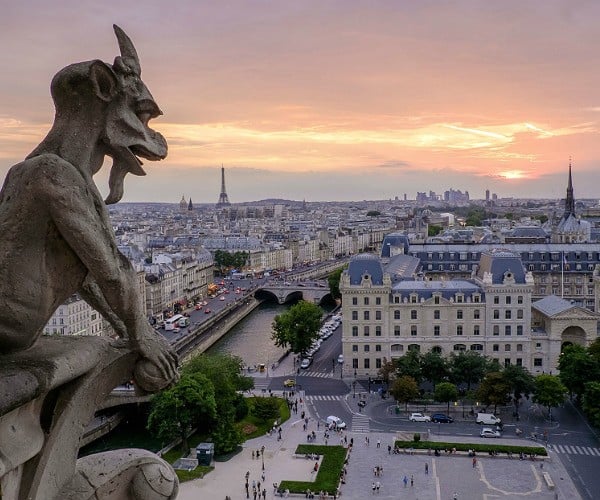 Here’s a list of five off-the-beaten-path museums we recommend.
Musée Carnavalet
16 Rue des Francs Bourgeois, Paris 75003
An historic mansion from 1548, once lived in by Madame Sevigne, the celebrated letter writer, was converted into the Carnavalet Museum in 1880, under the order of Eugene Haussmann. The Musée Carnavalet is actually a conglomeration of two former mansions and takes up almost an entire block in the center of the Marais district.
Here’s a list of five off-the-beaten-path museums we recommend.
Musée Carnavalet
16 Rue des Francs Bourgeois, Paris 75003
An historic mansion from 1548, once lived in by Madame Sevigne, the celebrated letter writer, was converted into the Carnavalet Museum in 1880, under the order of Eugene Haussmann. The Musée Carnavalet is actually a conglomeration of two former mansions and takes up almost an entire block in the center of the Marais district.
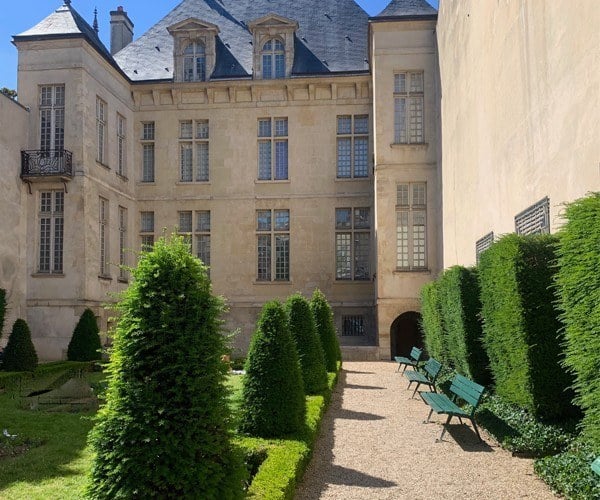 Musée Carnavalet focuses on the history of the city of Paris and contains an immense and rich collection of thousands of paintings, sculptures, photos, engravings, drawings, pieces of furniture, and various other items. It covers the most significant periods in Parisian history including the earliest settlement by the Romans in 52AD, then called Lutetia, the medieval period, the Renaissance, the French Revolution, the sweeping reconstruction in the 1800s, and finally the 20th century. One gallery is dedicated to the antique shop signs from the 16th to the 20th century. In addition, the museum frequently presents temporary exhibitions. Three lush gardens including a formal garden and herb and vegetable garden are open to the public.
Musée Carnavalet focuses on the history of the city of Paris and contains an immense and rich collection of thousands of paintings, sculptures, photos, engravings, drawings, pieces of furniture, and various other items. It covers the most significant periods in Parisian history including the earliest settlement by the Romans in 52AD, then called Lutetia, the medieval period, the Renaissance, the French Revolution, the sweeping reconstruction in the 1800s, and finally the 20th century. One gallery is dedicated to the antique shop signs from the 16th to the 20th century. In addition, the museum frequently presents temporary exhibitions. Three lush gardens including a formal garden and herb and vegetable garden are open to the public.
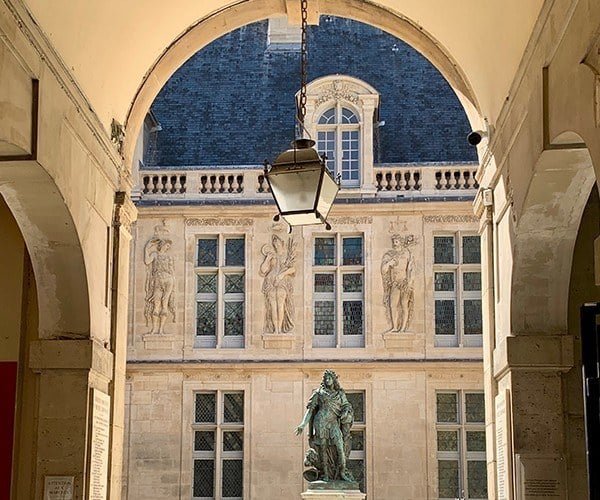 Admission is free for the permanent collection.
Musée Cognacq-Jay
8 Rue Elzevir, Paris 75003
Just around the corner from the Musée Carnavalet, is a small gem of a museum, Musée Cognacq-Jay. Ernest Cognacq, was the owner of a chain of luxury department stores, Samaritaine, and he and his wife, Mary-Louise Jay were avid collectors of fine antiques, amassing an extensive collection between 1900 and 1927. When Cognacq died in 1929, he bequeathed his collection to the city of Paris, so that it was available for public viewing and for historical purposes.
Admission is free for the permanent collection.
Musée Cognacq-Jay
8 Rue Elzevir, Paris 75003
Just around the corner from the Musée Carnavalet, is a small gem of a museum, Musée Cognacq-Jay. Ernest Cognacq, was the owner of a chain of luxury department stores, Samaritaine, and he and his wife, Mary-Louise Jay were avid collectors of fine antiques, amassing an extensive collection between 1900 and 1927. When Cognacq died in 1929, he bequeathed his collection to the city of Paris, so that it was available for public viewing and for historical purposes.
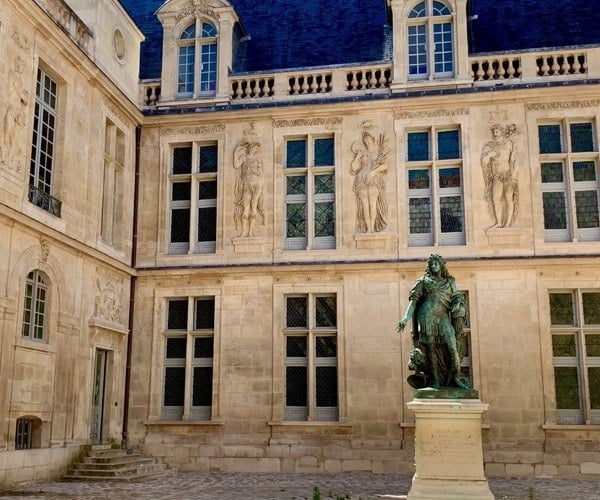 The museum was originally located on a site next door to the Samaritaine store on Boulevard des Capucines, close to the Paris Opera Garnier. In 1990 the collection was moved to a former, large-scale townhouse constructed in 1575 for an aristocratic family. Today the museum has meticulously recreated many of the former rooms of the Cognacq-Jay family, filled with antiques, furniture, objets, lamps, chandeliers, carpets, tapestries, and artifacts, mostly from the 18th century.
The museum was originally located on a site next door to the Samaritaine store on Boulevard des Capucines, close to the Paris Opera Garnier. In 1990 the collection was moved to a former, large-scale townhouse constructed in 1575 for an aristocratic family. Today the museum has meticulously recreated many of the former rooms of the Cognacq-Jay family, filled with antiques, furniture, objets, lamps, chandeliers, carpets, tapestries, and artifacts, mostly from the 18th century.
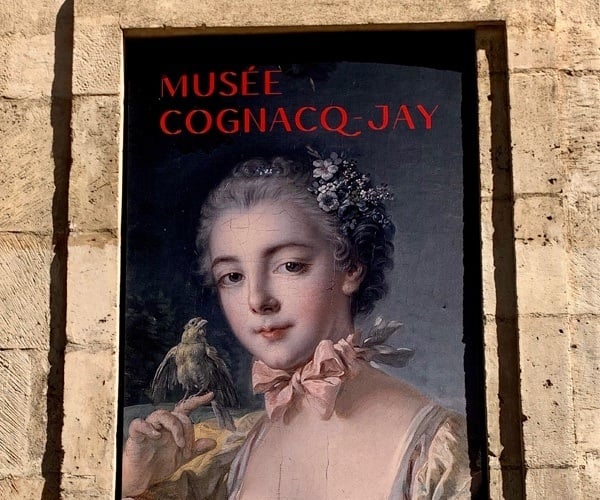 Admission is free for the permanent collection.
Fondation Louis Vuitton
Avenue du Mahatma Gandhi, Paris 75116
A modern-day behemoth made of glass and steel, is dedicated to one of the great art collections in the world. Billionaire Bernard Arnault, CEO of LVMH Moët Hennessy – Louis Vuitton the largest, luxury-goods company in the world, commissioned super-star, American architect Frank Gehry, to design Fondation Louis Vuitton, a museum to house his vast and varied, private art collection. Opened in 2014, Fondation Louis Vuitton, is located in the Bois de Boulogne park on the perimeter of the city of Paris. Gehry’s design concept was to create a massive building with a series of 12 panels with 3600 glass to simulate large boat sails and his inspiration came from the Grand Palais, another massive glass structure, which was built for the 1900 World’s Fair.
Admission is free for the permanent collection.
Fondation Louis Vuitton
Avenue du Mahatma Gandhi, Paris 75116
A modern-day behemoth made of glass and steel, is dedicated to one of the great art collections in the world. Billionaire Bernard Arnault, CEO of LVMH Moët Hennessy – Louis Vuitton the largest, luxury-goods company in the world, commissioned super-star, American architect Frank Gehry, to design Fondation Louis Vuitton, a museum to house his vast and varied, private art collection. Opened in 2014, Fondation Louis Vuitton, is located in the Bois de Boulogne park on the perimeter of the city of Paris. Gehry’s design concept was to create a massive building with a series of 12 panels with 3600 glass to simulate large boat sails and his inspiration came from the Grand Palais, another massive glass structure, which was built for the 1900 World’s Fair.
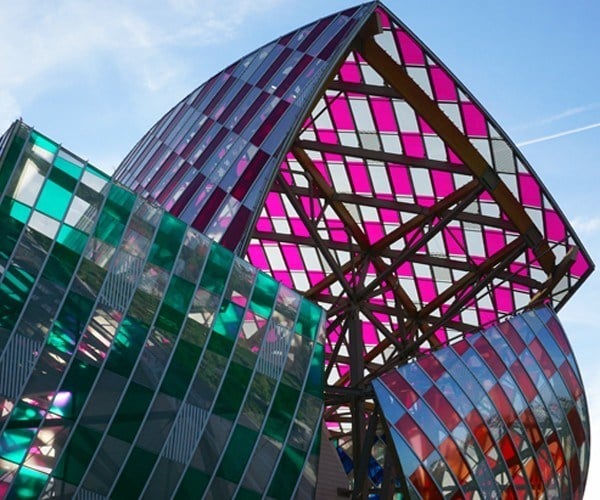 The 13,000 square foot interior is divided into eleven galleries, which rotates Arnault’s collection of mostly 20th century, contemporary artists. The striking architecture of the building sometimes distracts the viewer from seeing the art but makes a statement of its own. Jean-Michel Basquiat, Ellsworth Kelly, Jeff Koons, Taryn Simon, Gilbert and George, and Sarah Morris are just a handful of the stellar artists whose work is in the collection. The museum has a gourmet restaurant serving lunch and dinner with an outdoor terrace, a gift boutique, and book shop.
Musée de la Vie Romantique
16 Rue Chaptal, Paris 75009
Literally meaning the romantic life museum, Musée de la Vie Romantique is a delightful treasure that whisks you back to a home filled with the company of artists and writers of the late 1800s. Musée de la Vie Romantique, located below Montmartre, was the home of Dutch born portrait painter Ary Scheffer. He and his daughter became noted for their Friday night salons held in their house, inviting artists, musicians, and writers from the neighborhood such as Chopin, George Sands, Liszt, Charles Dickens, Eugene Delacroix, and Franz Liszt.
Walking down a long, cobblestone path from the street, you enter into a courtyard containing three structures, two of them used as Scheffer’s ateliers, the other, his home. The ateliers host temporary exhibitions and selected works of Scheffer, and the house is decorated in period furniture and antiques, with showcases filled with George Sands jewelry collection and more of Scheffer’s paintings. There’s a lovely outdoor tea salon in the garden.
Admission is free for the permanent collection.
Musée Marmottan Monet
2 Rue Louis Boilly, Paris 75016
In an unassuming building across from a small park, in a quiet, upscale, residential area of Paris, is a museum that has the world’s largest collection of Monet paintings. Musée Marmottan Monet was built as a home for businessman and art collector Paul Marmottan in the early 1900s. The museum was the beneficiary of a large collection of Monet paintings in 1966, which were donated by Claude Monet’s son Michel and it now contains over 100 Monet paintings on permanent display.
The 13,000 square foot interior is divided into eleven galleries, which rotates Arnault’s collection of mostly 20th century, contemporary artists. The striking architecture of the building sometimes distracts the viewer from seeing the art but makes a statement of its own. Jean-Michel Basquiat, Ellsworth Kelly, Jeff Koons, Taryn Simon, Gilbert and George, and Sarah Morris are just a handful of the stellar artists whose work is in the collection. The museum has a gourmet restaurant serving lunch and dinner with an outdoor terrace, a gift boutique, and book shop.
Musée de la Vie Romantique
16 Rue Chaptal, Paris 75009
Literally meaning the romantic life museum, Musée de la Vie Romantique is a delightful treasure that whisks you back to a home filled with the company of artists and writers of the late 1800s. Musée de la Vie Romantique, located below Montmartre, was the home of Dutch born portrait painter Ary Scheffer. He and his daughter became noted for their Friday night salons held in their house, inviting artists, musicians, and writers from the neighborhood such as Chopin, George Sands, Liszt, Charles Dickens, Eugene Delacroix, and Franz Liszt.
Walking down a long, cobblestone path from the street, you enter into a courtyard containing three structures, two of them used as Scheffer’s ateliers, the other, his home. The ateliers host temporary exhibitions and selected works of Scheffer, and the house is decorated in period furniture and antiques, with showcases filled with George Sands jewelry collection and more of Scheffer’s paintings. There’s a lovely outdoor tea salon in the garden.
Admission is free for the permanent collection.
Musée Marmottan Monet
2 Rue Louis Boilly, Paris 75016
In an unassuming building across from a small park, in a quiet, upscale, residential area of Paris, is a museum that has the world’s largest collection of Monet paintings. Musée Marmottan Monet was built as a home for businessman and art collector Paul Marmottan in the early 1900s. The museum was the beneficiary of a large collection of Monet paintings in 1966, which were donated by Claude Monet’s son Michel and it now contains over 100 Monet paintings on permanent display.Did you enjoy this article?
Receive similar content direct to your inbox.


Dont forget my favorite little museum- on a quiet street just around the corner from the busy tourist- filled Place de Tertre, is the Dali Museum, a wonderful information and sculpture filled , intimate and delightful space devoted to Salvatore Dali.
Te my previous comment- a couple of corrections:
Its Salvadore not Salvatore Dali ( the app erroneously ” corrected” me) and
The Place de Tertre is of course in Montmartre just around the corner from Sacre Coeur cathedral at the top of the hill.
It’s great to see that the rich carry on being patrons for the arts like they have done for thousands of years. If I can ever afford to buy any Louis Vuitton luxury goods it will be nice to know that some of my hard earned dollars go to somewhere like the Louis Vuitton Foundation. Maybe Bill Gates donations to fighting Malaria and other diseases are more important but the arts have kept a lot of us sane over the last few difficult months. Thanks to Billionaire Bernard Arnault for creating such a brilliant collection.
Although I do admittedly tend to do the bigger touristy places when I travel, I equally like going down the path a little less travelled. I think the popular ones are more like things you can tick off your list and tell people about because they’re recognisable and known about. The smaller or less obvious destinations, events or attractions often hold their own unique charm and I’ve been to plenty of places like this where I’ve been so glad to have gone there rather than elsewhere. As you say, at this time you can also avoid the crowds a bit which is desirable now more than ever.
Some interesting ones here that I’d not come across before. The classic architecture of many of these, like the Musée Cognacq-Jay, is stunning. It’s lucky that Cognacq donated the collection to the city of Paris so the world could appreciate and enjoy what’s there rather than pass it down to others in the family. I wonder how much all that would be worth in today’s money, quite a lot I imagine. I really like the contemporary flare with the glass building too, very funky and I suppose on the whole I do prefer modern art so it’s great there’s a range of antiques and artefacts and art to choose from around the different museums.
We’ve really missed visiting museums and galleries during lockdown-down. Although I know that a lot of people will be reluctant to travel I still think that these places will be busy as they gradually re – open. Lots of my friends have said that they’ve really enjoyed some of the virtual tours that have been available and some of those really have shown us what we’ve been missing.
First time I’ve heard of the Louis Vuitton museum. It would be an interesting visit to see what sort of art collection the owner of a luxury brand has. Also, I would expect some sort of section for LV history and maybe a display of limited or one-of-a-kind pieces the company has produced. As a lover of fashion, I’m curious to see what kind of “gifts” are sold in their gift shop. Certainly not something you’d take home as just souvenirs. I’d certainly visit Marmottan Monet just to get up close and personal with a Monet without jostling a crowd to get a peek at it. A good list, but wouldn’t miss the Louvre or Orsay…I will probably just delay to a less crowded day and time.
There is no doubt that Paris is home to many beautiful crafts and amazing architectures. These museums offer the same experience that you will have when you visit the Louvre or Musée d’Orsay. It houses different art forms that can be enjoyed by tourists or locals. However, I believe that the streets of Paris contain more art than these museums. It gives us an authentic experience of the city’s beauty. Aside from that, we are also given a chance to interact with locals and know more about the city. These museums can also be considered as an integral component of Paris. It holds more than just art pieces but also the city’s rich culture and history.